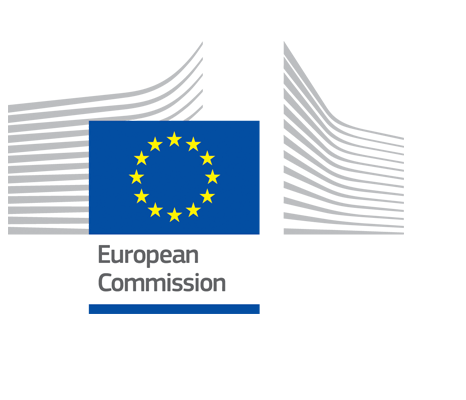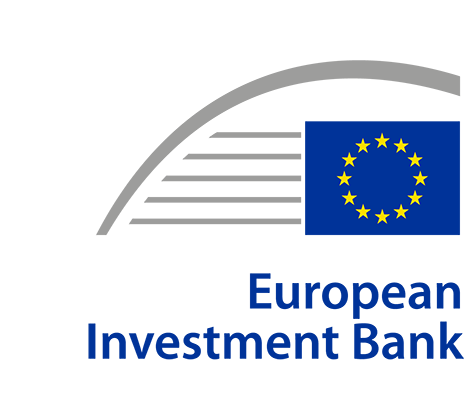Financial instruments under the ESF and EFSI, including microfinance – European and Italian perspectives
Overview
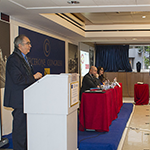
Picture: Jader Cané, European Commission, Bruno Robino, European Investment Bank and Martina Rosato, Italian Ministry of Labour
The European Social Fund (ESF) and the European Fund for Strategic Investments (EFSI) can be combined in the implementation of financial instruments, including microfinance, and this was the focus of a fi-compass seminar held on 1 December in Rome.
Experts from the Italian Ministry of Labour and the NUVAP (Dipartimento Politiche di Coesione, Presidenza del Consiglio), as well as the European Commission (DG Employment, Social Affairs and Inclusion), the European Investment Bank Group (EIB Group), and microfinance providers represented through the Rete Italiana Microfinanza (RITMI) and the European Microfinance Network (EMN) as microfinance networks shared their experience through presentations and discussion sessions. The use of microfinance instruments was extensively explored during the event.
This fi-compass seminar included over 80 delegates representing the majority of Italian ESF managing authorities, regional and national authorities, as well as financial intermediaries, many of which specialised in microfinance.
Jader Cané from the European Commission Directorate-General Employment, Social Affairs and Inclusion, welcomed participants to this seminar. Bruno Robino, Head of fi-compass, moderated the event, encouraging dialogue and exchanges of experience between participants and speakers.
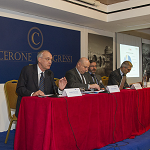
Picture: Giampietro Pizzo, Rete Italiana Microfinanza (RITMI), Bruno Robino, European Investment Bank, Jorge Ramirez Puerto, European Microfinance Network (EMN) and Salvatore Vescina, Agenzia per la Coesione Territoriale
In the morning session, Martina Rosato from the Italian Ministry of Labour illustrated the state of play and the perspectives in the near future for financial instruments supported by ESF in Italy. She highlighted the importance of the ex-ante assessment, as a market and feasibility study to enhance evidence-based decision making about launching ESF financial instruments. She also described existing projects, including some that combined ESF and European Regional Development Fund (ERDF) financial contributions.
Subsequently, speakers from the EIB Group illustrated common success factors for financial instruments as well as options offered by the EIB Group for ESF managing authorities. They also explained how investments are selected for support from the EFSI, and the way such financing can be combined with the European Structural and Investment Funds (ESIF) and in particular the ESF. This was of great interest and it prompted engaging questions from the audience.
The session was concluded by Luca Galassi from the Sardinia region, who explained the successful implementation of financial instruments under the ESF in his region.
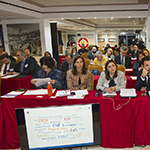
Picture: Audience at the seminar
In the afternoon, an expert panel of Giampietro Pizzo, President of RITMI, the microfinance networks, Jorge Ramirez Puerto, General Manager of EMN and Corrado Ferretti, President of PerMicro, presented a useful overview of the private and public microfinance initiatives in Italy, as well as across Europe.
Following this, Salvatore Vescina from the governmental organisation Agenzia per la Coesione Territoriale (the Italian Agency for Territorial Cohesion) presented a set of optional performance and impact indicators to measure the results of microfinance instruments.
Marianna D’Angelo from the Italian Ministry of Labour, managing authority of the ESF National Operational Programmes 'Iniziativa Occupazione Giovani e Sistemi di Politiche Attive per l’Occupazione' (Young People’s Work Initiative and Active Procedures for Work) concluded this successful seminar with an invitation to the audience to continue working proactively to boost the success of ESF programmes.
| Title | Speakers | ||
|---|---|---|---|
| |
Financial instruments under ESF in Italy – State of play |
Martina Rosato, Ministero del Lavoro e delle Politiche Sociali – DG Politiche Attive, Servizi per il Lavoro e la Formazione - Divisione II |
|
| |
Success factors of financial instruments |
Alessandro Apa, Fund and Structuring Officer, European Investment Bank and Gianluca Palermo, Regional Business Manager, European Investment Fund |
|
| |
Combining ESIF and EFSI programmes, including case studies |
Christos Pouris, Financial Instruments Advisor, European Investment Bank |
|
| |
Introducing EFSI, with a view to its social dimension |
Matthieu Bertrand, Mandate Manager, European Investment Bank |
|
| |
From microfinance to inclusive finance |
Christos Pouris, Financial Instruments Advisor, European Investment Bank |
|
| |
Regional case study on the implementation of microfinance instruments |
Luca Galassi, Director for the provision of Service Support to the Managing Authority for the ESF OP, Sardinia |
|
| |
Intervention from the Ente Nazionale per il microcredito |
Mario Baccini, President, Ente Nazionale per il microcredito |
|
| |
ESF and microfinance: paving the way for stronger financial inclusion programmes at national and regional level |
Giampietro Pizzo, President, RITMI (Italian Microfinance Network) |
|
| |
ESF and microfinance in Europe: best practices and perspectives |
Jorge Ramirez Puerto, General Manager, EMN (European Microfinance Network) |
|
| |
ESF and microfinance: a set of performance and impact indicators |
Salvatore Vescina, Senior Advisor (Area Progetti e Strumenti), Agenzia per la Coesione Territoriale |
|
| |
Private-Public-Partnership Microfinance in Piemonte Region: experiences and recommendations from the field |
Corrado Ferretti, President, PerMicro |
